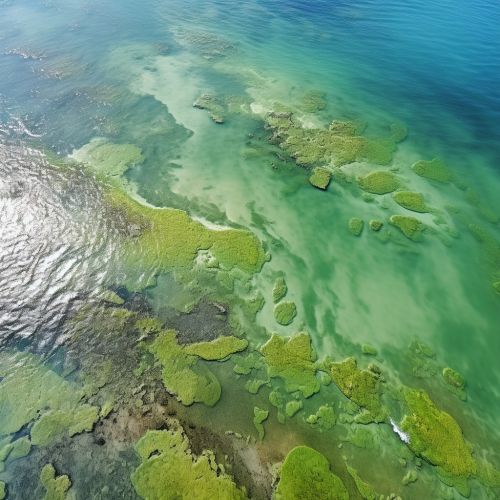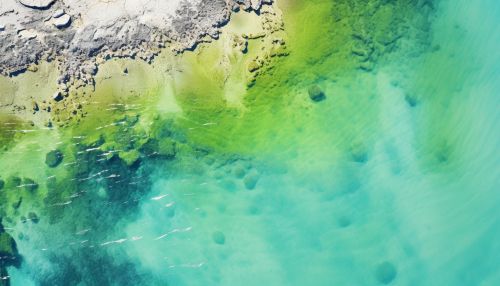Algal bloom
Introduction
An algal bloom is a rapid increase or accumulation in the population of algae in freshwater or marine water systems. It is often recognized by the discoloration in the water from the algae's pigments. Algal blooms are the result of a nutrient, like nitrogen or phosphorus from fertilizer runoff, entering the water and causing excessive growth of algae and green plants.
Types of Algal Blooms
There are two general types of algal blooms: harmful and non-harmful.
Non-harmful Algal Blooms
Non-harmful algal blooms, as the name suggests, do not produce toxins and are not harmful to humans or the environment. They can, however, be a nuisance as they can cause problems in water treatment processes, create bad odors and tastes, and deplete oxygen in the water.
Harmful Algal Blooms
Harmful algal blooms (HABs) are algal blooms composed of phytoplankton known to naturally produce biotoxins. These toxins can have harmful effects on people, fish, shellfish, marine mammals, and birds. HABs have been reported in every U.S. coastal state, and their occurrence is on the rise. HABs are a national concern because they affect not only the health of people and marine ecosystems, but also the 'health' of local and regional economies.


Causes of Algal Blooms
Algal blooms are caused by a combination of certain factors including sunlight, slow-moving water, and excess nutrients (phosphorus and nitrogen).
Sunlight
Algae need sunlight to carry out photosynthesis, so when sunlight is abundant, algal blooms can occur.
Slow-moving Water
Slow-moving or still water can also contribute to the formation of algal blooms. In these conditions, algae can grow on the water's surface, where they have access to sunlight.
Excess Nutrients
Excess nutrients are often the primary cause of algal blooms. Nutrients can come from many sources, but the most significant source is agricultural runoff, which often contains high levels of nitrogen and phosphorus from fertilizers.
Effects of Algal Blooms
Algal blooms can have many negative effects on ecosystems and human health.
Effects on Ecosystems
Algal blooms can create dead zones in the water, which are areas where the oxygen level is so low that most marine life cannot survive. This can lead to a decrease in biodiversity and disrupt the food chain.
Effects on Human Health
Harmful algal blooms can produce toxins that are dangerous to humans. These toxins can cause illness if humans consume contaminated seafood or if they come into direct contact with the toxins, such as by swimming in contaminated water.
Prevention and Control of Algal Blooms
There are several ways to prevent and control algal blooms.
Reducing Nutrient Runoff
One of the most effective ways to prevent algal blooms is to reduce the amount of nutrients that run off into bodies of water. This can be achieved by using fewer fertilizers or by using fertilizers that are less likely to run off.
Using Algaecides
Algaecides are chemicals that kill algae. They can be used to control algal blooms, but they must be used with caution because they can also harm other aquatic life.
Introducing Algae-eating Species
In some cases, introducing species that eat algae, like certain types of fish or shellfish, can help control algal blooms.
